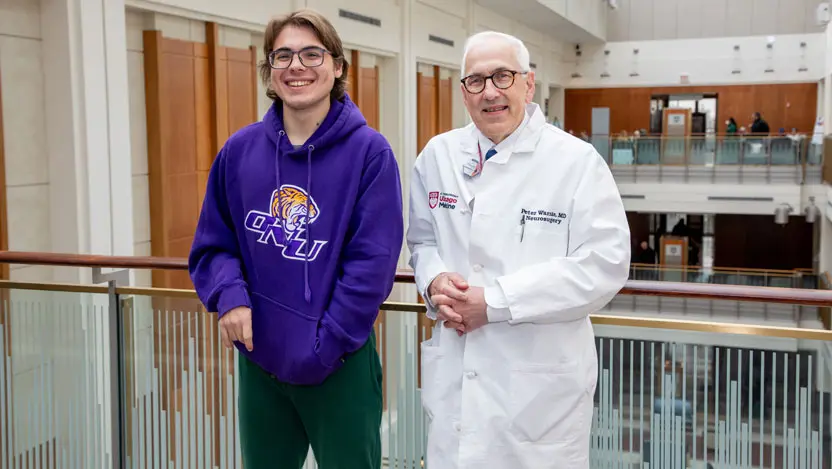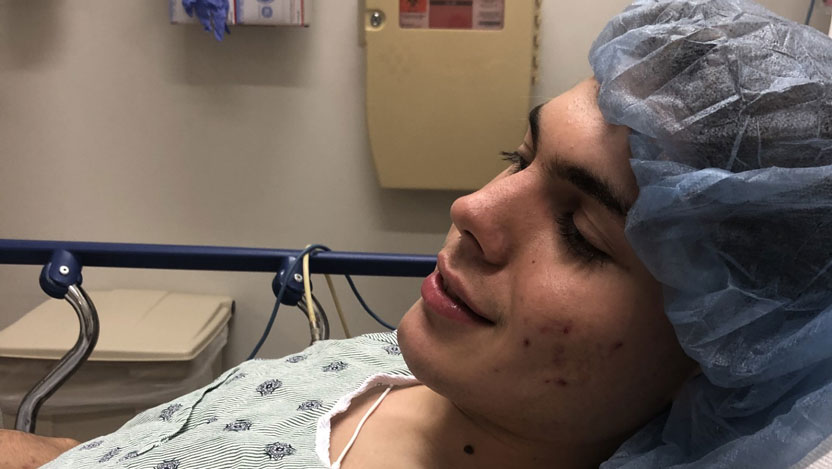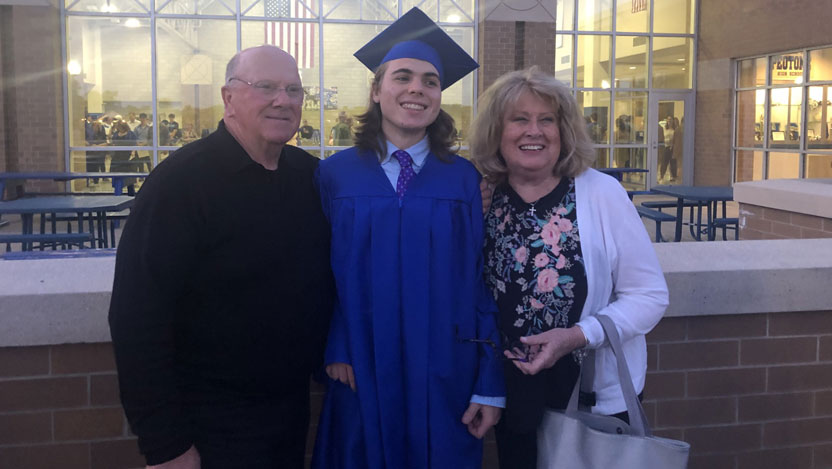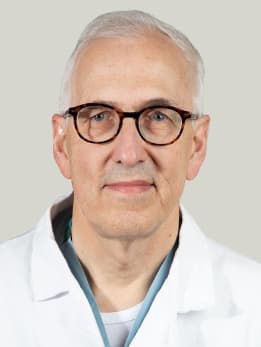Novel laser hemispherotomy surgery stops teen’s seizures for good

Thor Marchio had a massive stroke when he was born, causing him to develop epilepsy at age eight.
At first, his epilepsy was controlled with anti-seizure medication. But in high school, Marchio began to experience near-constant seizures — between 100 and 400 episodes a day — that no drug could stop.
“Some days, it felt as if I couldn’t think for more than a few seconds in class before I had a seizure,” said Marchio, now 18, of Frankfort, Illinois.
Some seizures consisted of staring spells, followed by massive headaches. At other times, an epileptic aura would warn Marchio of an impending motor seizure and he would get down on the ground, assisted by his classmates. Seizures would also wake him at night, leaving him chronically sleep-deprived.
Still, Marchio managed to get straight A’s in his classes.
“Thor is a tenacious person, and I think his internal optimism really carried him through a very challenging time when, despite trying multiple medications, his seizures became drug-resistant,” said Endeavor Health pediatric neurologist Margaret Michelson, MD, who first treated Marchio’s epilepsy. (Endeavor Health is a member of the Chicagoland Children’s Health Alliance, along with the University of Chicago Medicine Comer Children’s Hospital and Advocate Children’s Hospital.)
Facing a ‘huge and scary’ surgery
Tenacity couldn’t overcome the relentless seizures that landed the teenager in the emergency room one night. Soon after, his family drove him to the Mayo Clinic, where he was hospitalized for two weeks. Physicians advised that Marchio would need a functional hemispherectomy to stop the seizures.
His parents, Deanna and Matthew, were shocked by a description of the surgery. Neurosurgeons would remove a piece of their son’s skull to access his brain, cut connections between different areas of the brain responsible for seizure spread and sever the connections between the two brain hemispheres.
With the two halves of the brain disconnected, seizures that occurred in the damaged side of the brain could no longer spread to the healthy side of the brain.
“The procedure seemed so huge and scary,” Deanna Marchio said.
When the Marchios consulted with Michelson about the proposed surgery, she recommended the family see pediatric neurosurgeon Peter Warnke, MD, Director of Stereotactic and Functional Neurosurgery at UChicago Medicine.
Warnke, she told them, used lasers to disconnect the two hemispheres of the brain, a novel and far less invasive procedure than the traditional open surgery.
Novel, safer approach using lasers

Warnke first performed a laser functional hemispherotomy for the treatment of drug-resistant epilepsy in 2021 — making him only the second neurosurgeon in the world to do so. The risk of injury to the brain from laser hemispherotomy is less than 2%, compared to a five- to tenfold higher risk of complications from the invasive open surgery, according to Warnke.
“Although people with seizures resulting from a perinatal stroke almost never become seizure-free with medication, many avoid having the standard open surgery because of its high risk of complications, including a decrease in motor function and hydrocephalus,” Warnke said.
“Laser functional hemispherotomy offers the potential to be seizure-free with a significantly lower risk because it does not mechanically manipulate the brain and can be performed without any blood loss or exposure of the brain to blood, which can cause hydrocephalus.”
Warnke also directs the pediatric and adult epilepsy surgery program at UChicago Medicine, which has a comprehensive Level 4 epilepsy center, the highest designation granted by the National Association of Epilepsy Centers. The center combines the care of children and adults in a unique way and allows for the smooth transition of care when children become adults.
Among the most recent 70 children surgically treated by Warnke and his team, 84% were either seizure-free or had only auras with no seizures.
Real-time monitoring during brain surgery
When the Marchios met Warnke, he described the procedure he would perform on their son.
After drilling five small holes about the size of coffee stirrers into the patient’s head, Warnke would insert catheters containing laser fibers deep into the brain. The procedure would be done in an MRI scanner, providing Warnke with continuous vision and real-time monitoring of the brain temperature and cell damage, which offers greater safety than open surgery.
MRI technology called tractography allows Warnke to see the configuration of the fiber tracts in the brain and identify the ones causing the seizures to spread. Warnke would use the laser’s heated tip to ablate the epileptogenic tissue and the seizure pathways with pinpoint precision and seal off the connections between the two brain hemispheres.
To date, Warnke has done five laser hemispherotomies; the youngest patient was age six.
“The fiber tracts develop as the brain matures, so a child must be old enough for me to see that fiber network on imaging,” Warnke said. Of the five patients, 4 are now seizure-free.
Seizure-free and off to college

Marchio didn’t hesitate in agreeing to the novel laser procedure, reassured by Warnke’s experience and international renown as a neurosurgeon, as well as his skill in using lasers to treat other forms of epilepsy and brain tumors.
“I had faith that God was going to see me through this,” Marchio said.
In July 2023, Warnke performed the five-hour surgery at the UChicago Medicine Center for Care and Discovery in Hyde Park. Two days later, Marchio was discharged — and in another six weeks, he started college at Olivet Nazarene University in Bourbonnais, Illinois, on scholarship and seizure-free.
“Thor is cognitively much better than he was before surgery,” Warnke said. “Seizures cause attention deficits and impair memory, and once patients are rid of seizures, they perform much better in school and in life.”
Deanna Marchio is grateful to see her son enjoying life. “It is wonderful to see my son start an exciting new chapter without devastating seizures,” she said. “It is truly a blessing beyond words after all we have been through.”

Peter Warnke, MD
Internationally renowned neurosurgeon Peter Warnke, MD, has performed more than 5,000 stereotactic surgeries and more than 2,000 brain tumor surgeries. Dr. Warnke provides neurosurgical care for the treatment of adults and children with movement disorders, epilepsy and brain tumors.
Learn more about Dr. Warnke